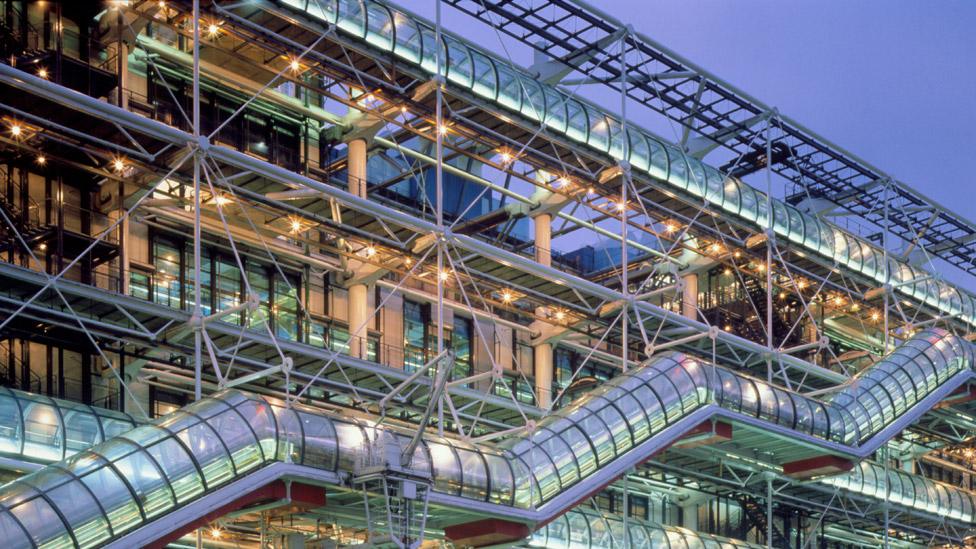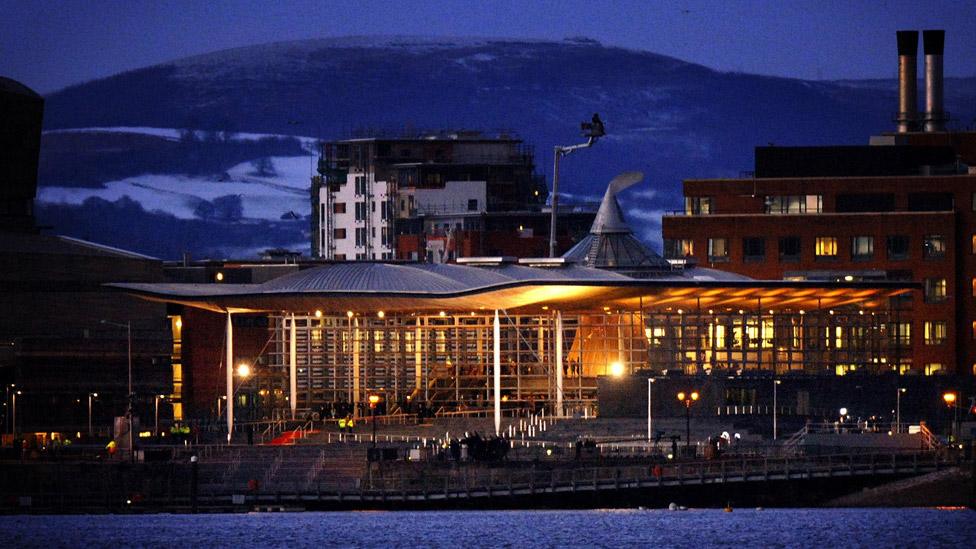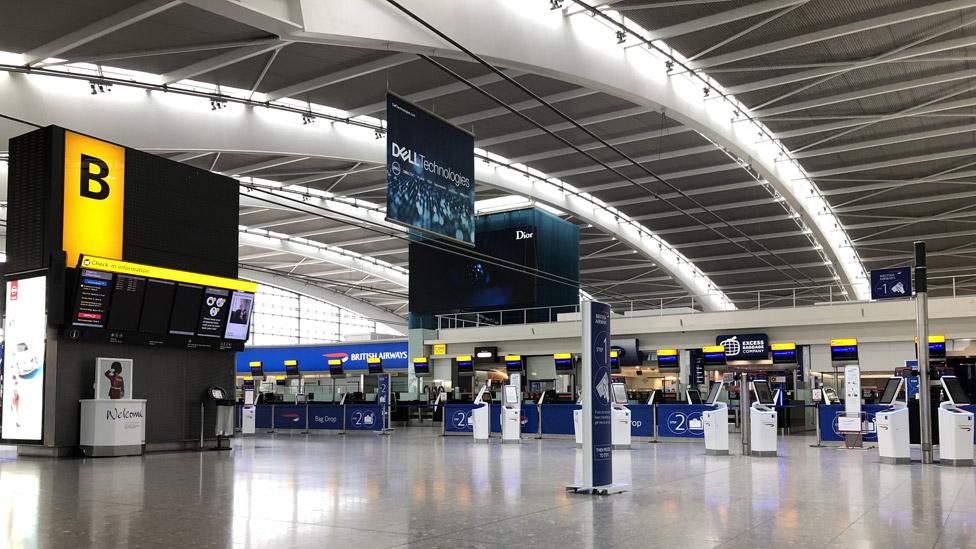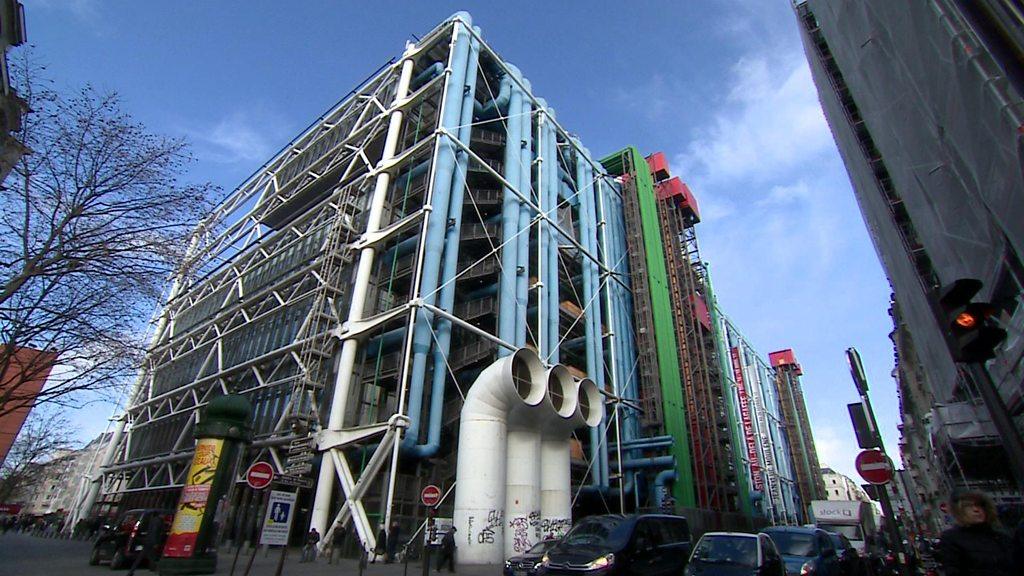Richard Rogers retires: Pompidou and Dome architect helped shape our cities
- Published

Richard Rogers with a model of the Lloyds building in 1995
Richard Rogers, one of the world's most successful and influential architects, has stepped down from his firm after more than 40 years.
Lord Rogers, 87, designed landmark buildings including the Pompidou Centre in Paris, the Millennium Dome in London and the Welsh Assembly in Cardiff.
He is one of a handful of architects credited with shaping modern cities.
He has retired from Rogers Stirk Harbour & Partners, which he founded as the Richard Rogers Partnership in 1977.

The Pompidou Centre and other buildings were controversial when they opened

Inside the Lloyds building in London, which opened in 1986
He has won most of architecture's major honours, including the prestigious Pritzker Prize in 2007 and the Stirling Prize twice. He was knighted in 1991.
He came to prominence in the 1970s and 80s with two buildings that were controversial at the time for putting amenities like lifts and air conditioning ducts on the outside - the Pompidou, which he designed with Renzo Piano, and the Lloyds building in London.
His critics have included Prince Charles, who has spoken about his dislike of Lord Rogers' designs on several occasions.
But that did not prevent the architect from going to strength to strength around the world. His other creations included the European Court of Human Rights in Strasbourg, the Welsh Assembly in Cardiff, Terminal 5 at Heathrow Airport and Terminal 4 of Madrid's Barajas Airport.

The Welsh Assembly building opened in 2006

The Millennium Dome is now the O2 Arena
The piazza as a public meeting place is often central to his ideas. "The concept that cities contain places where people can exchange ideas and meet others - that's the most exciting thing," he told the BBC World Service in 2013.
More recently, he built 3 World Trade Center in New York, an 80-storey skyscraper on the site of the former Twin Towers.
But he has said his favourite project was one of his first, and the most personal - the modernist house he designed for his parents in Wimbledon, external in the late 1960s.

Lord Rogers was behind the design for Heathrow Terminal 5
He also advised on urban planning in cities including London and Barcelona. He chaired the influential Urban Task Force on the state of the UK's cities from 1998-2001.
His company will now be led by partners Ivan Harbour and Graham Stirk, and under its constitution will drop Rogers' name within the next two years, according to Building Design, external.
Rogers Stirk Harbour & Partners gives 20% of its profits to charity - around £500,000 a year, according to its website, external.
- Published6 February 2017
